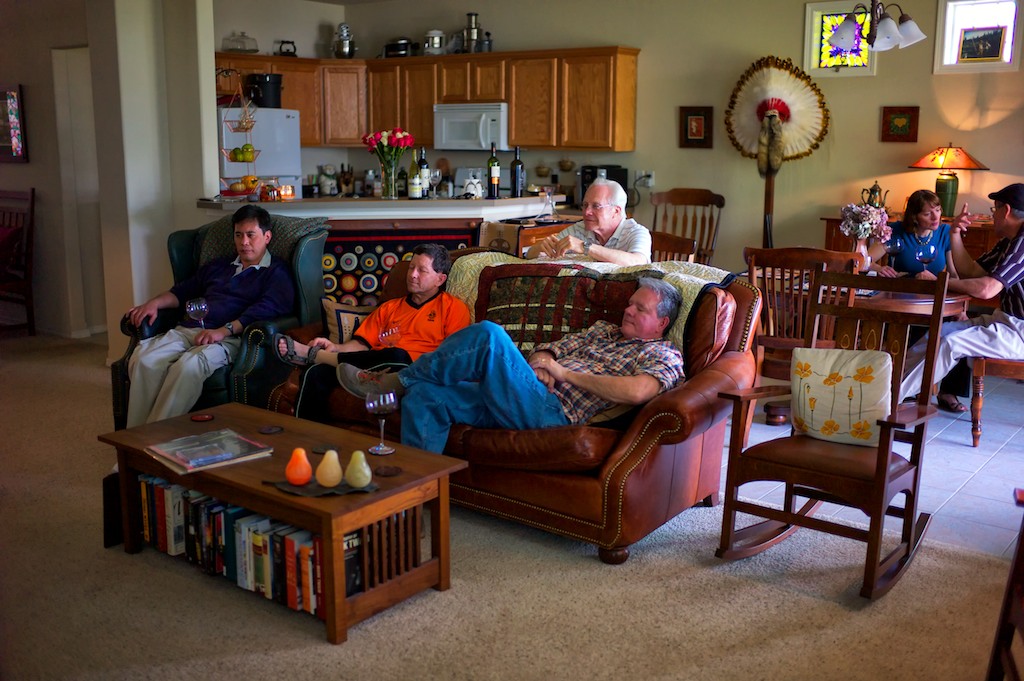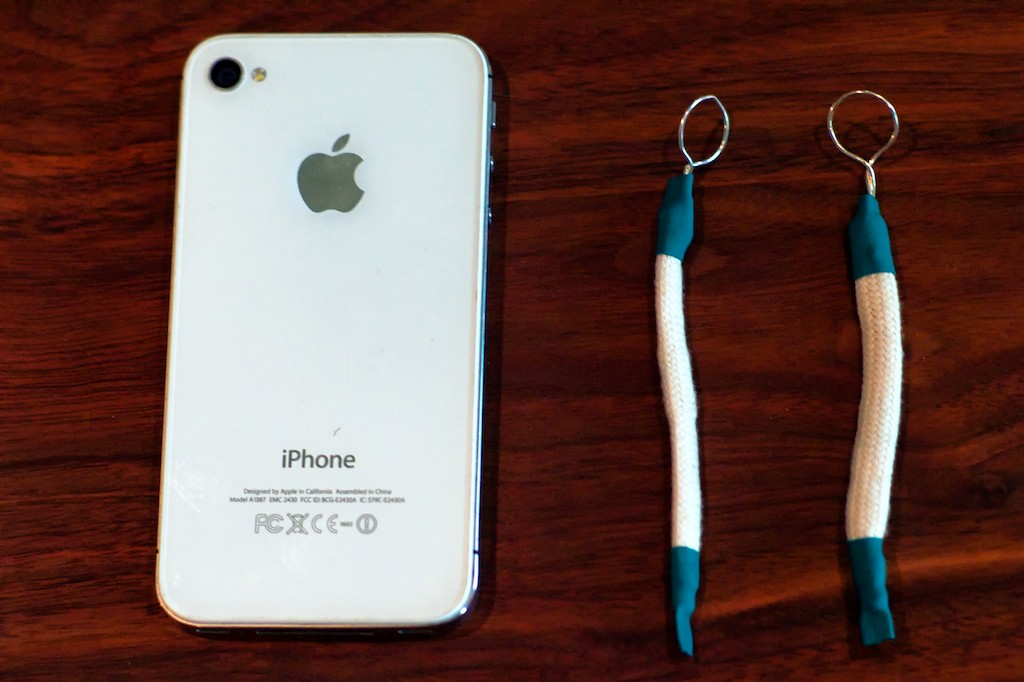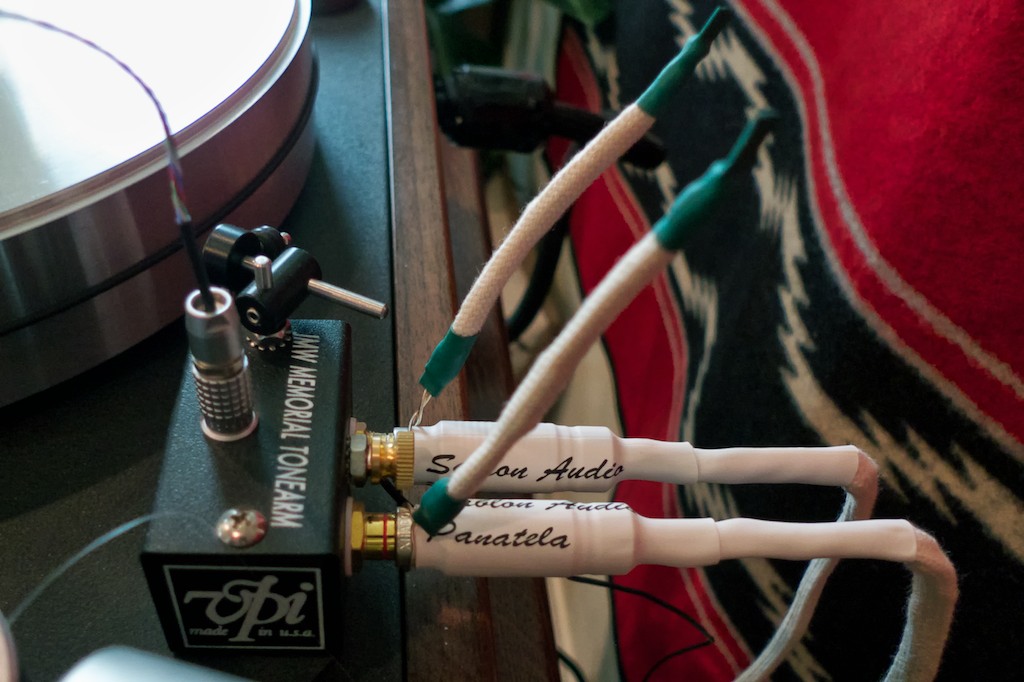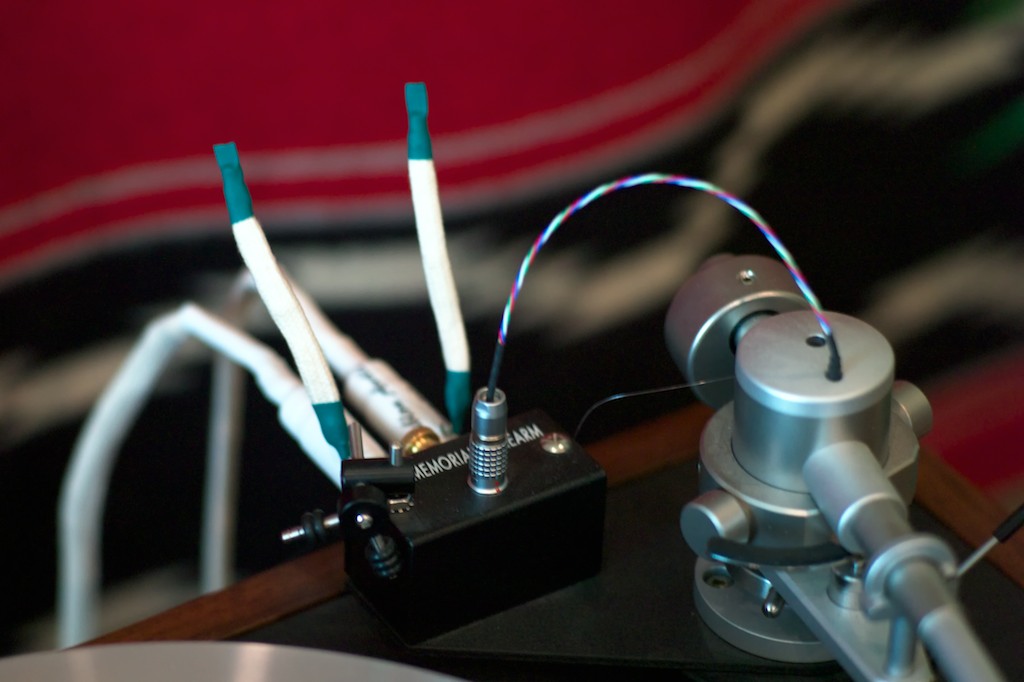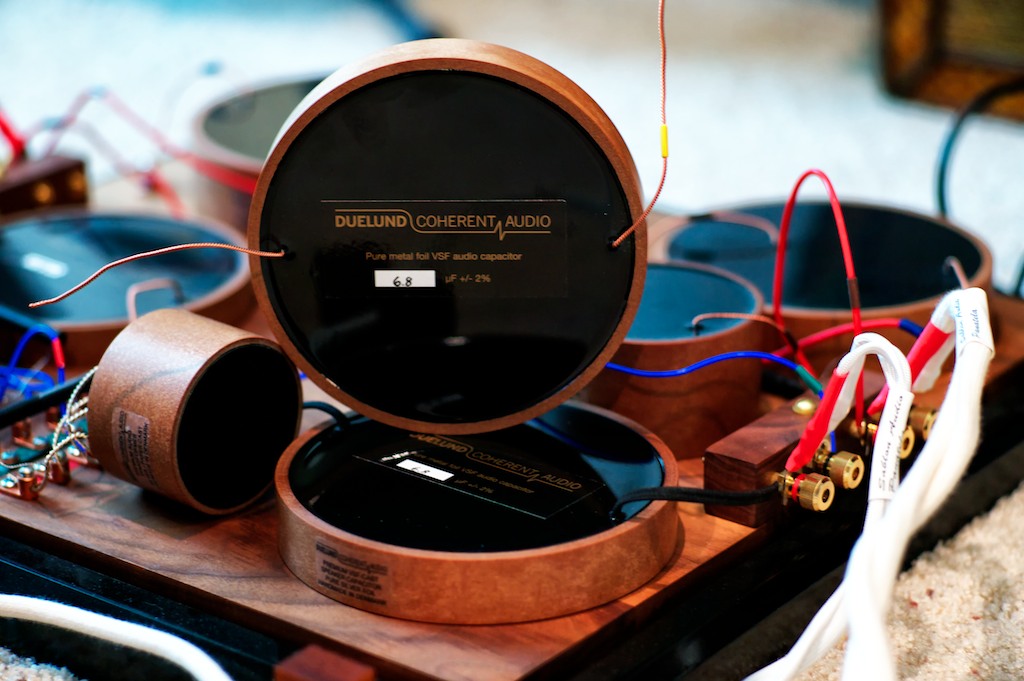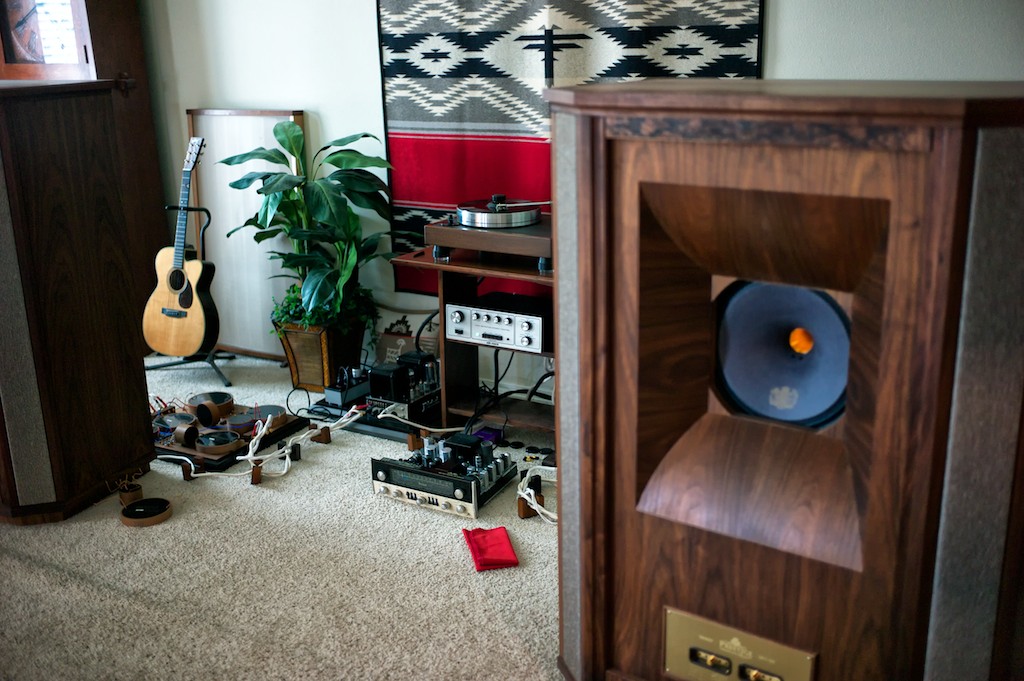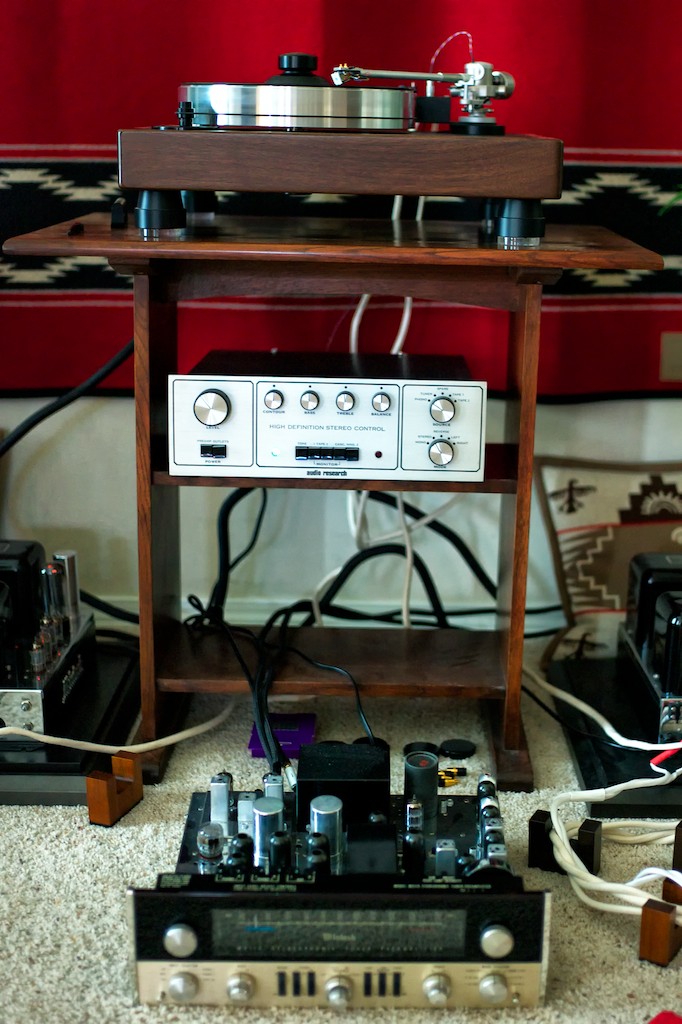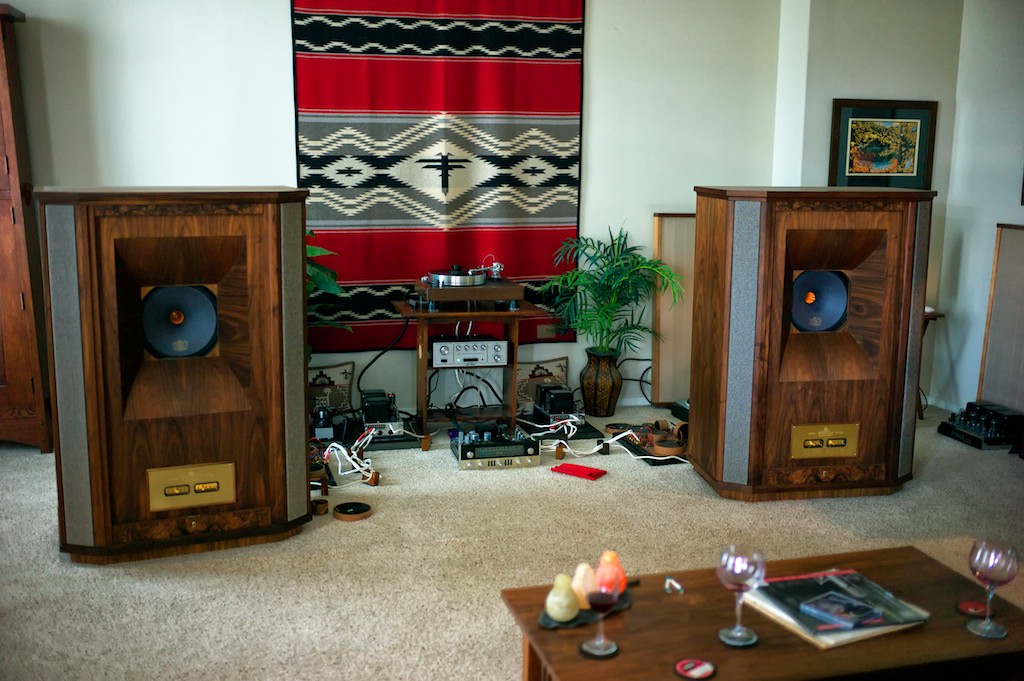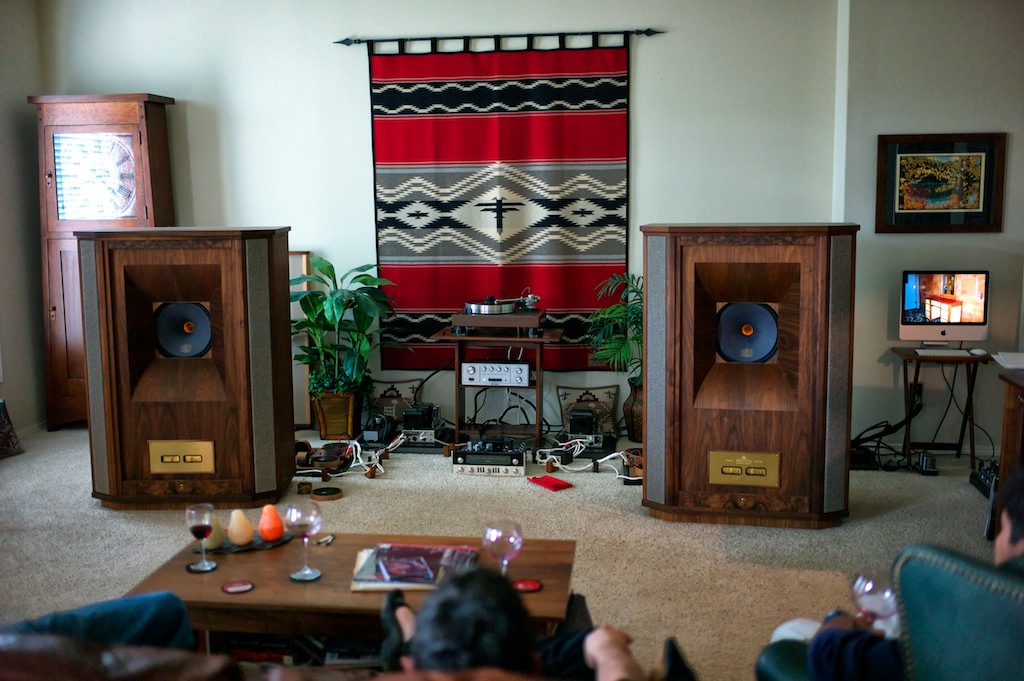I had my friends Leo, George, Ron, Stephaen (6Moons), my girlfriend Rosalie, and Santos, over for a listening session last Sunday afternoon.
First we listened to some interesting grounding loops from Mark Coles (Sablon Audio) that can be used on speaker cables, interconnects, and the Duelund-WRSE connections. Mark says the grounding loops are basically short loops of very fine gauge litz wire, and act as some sort of 'trap' for noise on the signal ground plane. You can see these simple devices made of silver wire next to the iPhone 4S for scale below.
We listened to the grounding loops first on the Panatela phono interconnects (below). The ground loops slip over the RCA barrel - that's all there is to it.
Stephaen told us that he listened to a similar product, and heard no change in the sound of his system. It was obvious to all of us - including Stephaen - that these simple devices from Mark were immediately audible, and it wasn't a subtle effect (these are not for sale by the way, they're part of Mark's ongoing R&D process of investigating potential performance enhancements for his cable products).
It was an interesting split decision on the desirability of the grounding loops: Everyone could easily hear the difference they made, and most were surprised something so simple would have such an audible effect.
George & Leo liked them, Rose & Ron weren't sure they liked them or not, but thought they deserved further listening. Stephaen & I preferred the system without them in place, as we thought the edginess & forwardness they introduced to the system outweighed the improvements in space, detail, and the boost in upper midrange dynamics.
So one third of the listeners didn't like them, one third wasn't sure if they liked them, and one third liked them. My final conclusion of the grounding loops on the Panatela phono interconnects (my favorites) was that they offered some improvements in audiophile-style sonics, but they degraded musicality.
Mark advised me that I should try them in a couple of other locations before I passed final judgement: Mark says the ground loops work well on speakers and urged me to give them a try on the signal return binding posts on the amp side of the crossover, saying that HF will probably give a better response. Mark also encouraged me to try them on the Panatela interconnects connecting the McIntosh MX110z preamp to the McIntosh MC30 mono amps.
So for now final judgement is withheld, and I'll report back after I'm able to experiment a bit more with them.
Next up was comparatively listening to the Duelund 6.8uF CAST silver & copper capacitors in the C1 position of the Duelund-WRSE high-frequency crossover. There's no doubt about it that the Duelund CAST 6.8uF copper capacitors sound fantastic, and that's what we listened to first. Smiles all around. Next I switched out the coppers and replaced them with silvers and we gave them a listen.
Ron, Leo, George, Rosalie, and I all thought the silvers were an improvement, however, Stephaen and Santos demurred feeling that the coppers sounded more natural. Stephaen mentioned that he found it hard to listen to the silvers objectively on the basis of their ultra-expensive price.
Ron used an analogy in describing the silvers: he thought the difference was similar to the tonal difference between a new set of guitar strings (silvers) and a well used set of strings (coppers). New strings sound brighter, more colorful, and more dynamic & detailed (there's a reason that musicians like new strings on their instruments!). Well used strings sound more laid back, mellower, less colorful, and less responsive.
Interestingly, my perceptions were the opposite of what Santos & Stephaen reported: I thought the silvers were more natural, smoother, and exciting. The high frequencies were clearer and more detailed, but struck me as more natural and even more beautiful than the amazing-in-their-own-right coppers.
To me the difference between the coppers and silvers is huge, with my tastes running strongly in the favor of the silvers. I think some of you will find it comforting that some people prefer the coppers over the silvers without respect to cost. I will go into great detail about their differences in their upcoming review.
We also had a real treat in listening to Ron's restored vintage Audio Research SP-3-A1 full function preamp with a design modification by Joe Curcio.
I'll tell you what, there's magic in vintage gear. The Audio Research sounded mighty fine, playing music superbly. It was brighter and more detailed than the Mac, but they both provided convincing takes on playing music that will keep you up late smiling.
We had a ball listening to music, playing with hi-fi gear, laughing, eating food, and drinking a few glasses of wine.
We had hoped to listen to the silver & copper Duelund CAST autotransformers compared to the stock Tannoy autotransformers, but we ran out of time.
Expect detailed impressions on all things silver in the not too distant future.
Thank you for stopping by Jeff's Place, and from my home to yours, may the music light up your life!




